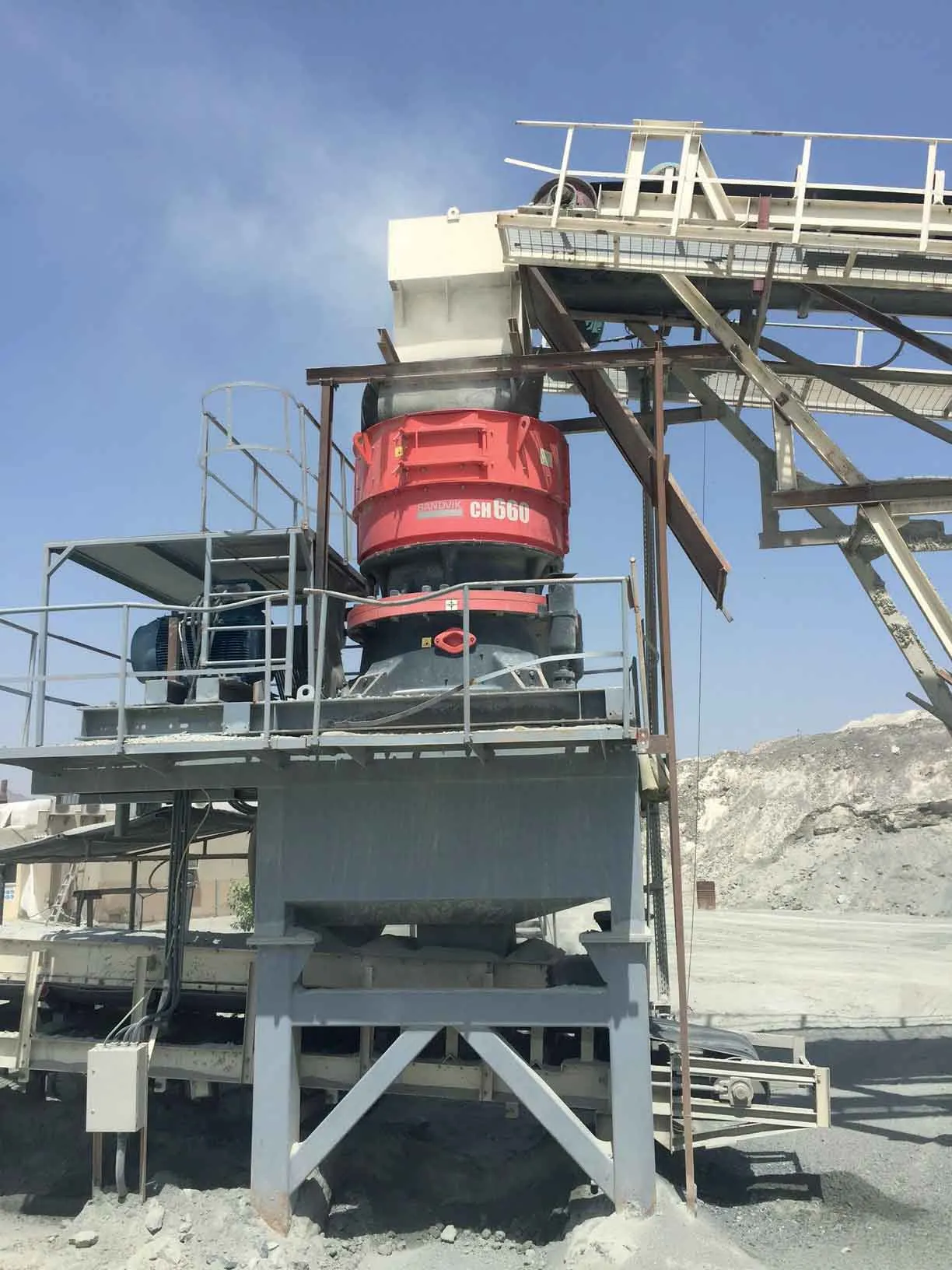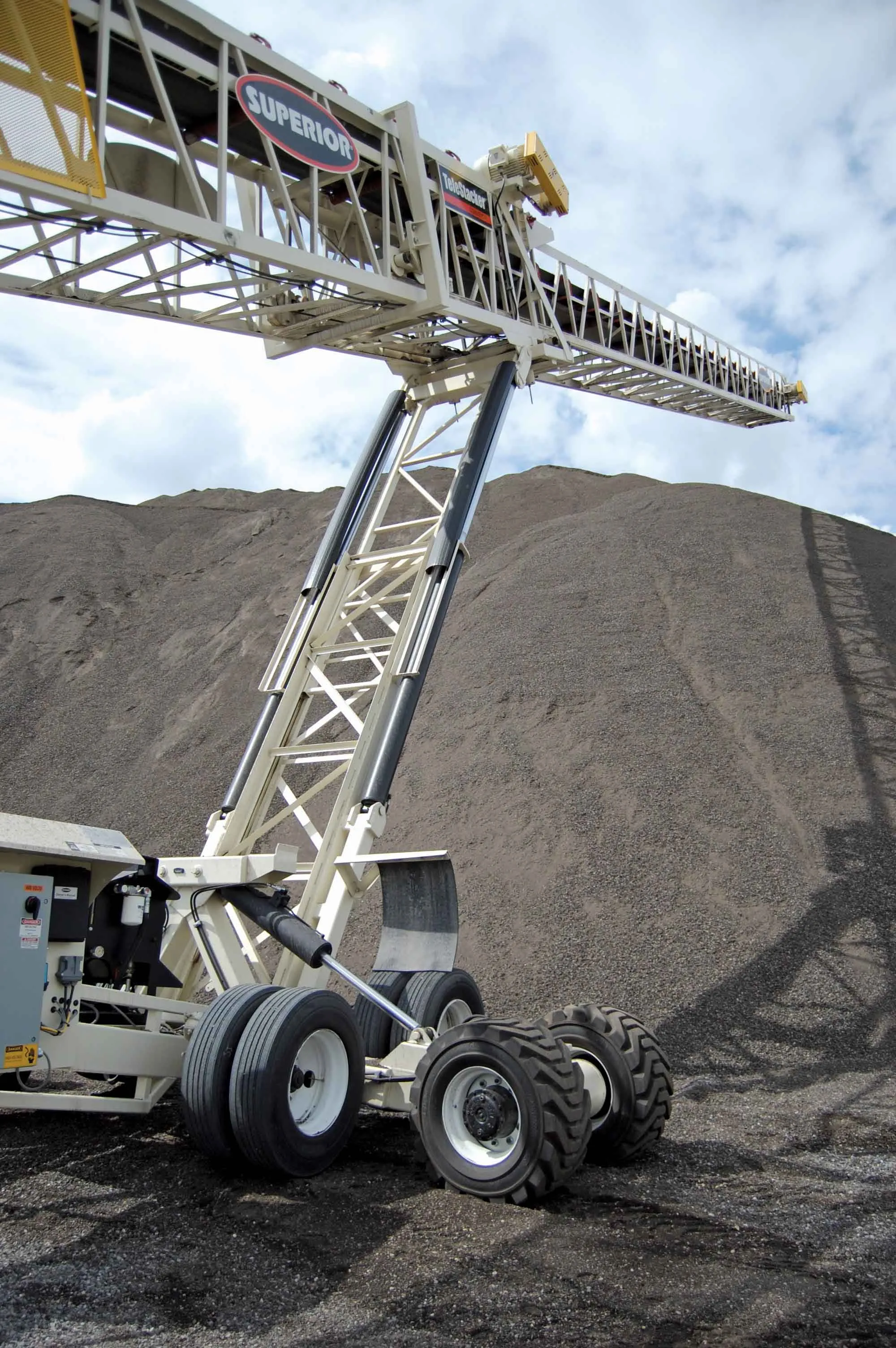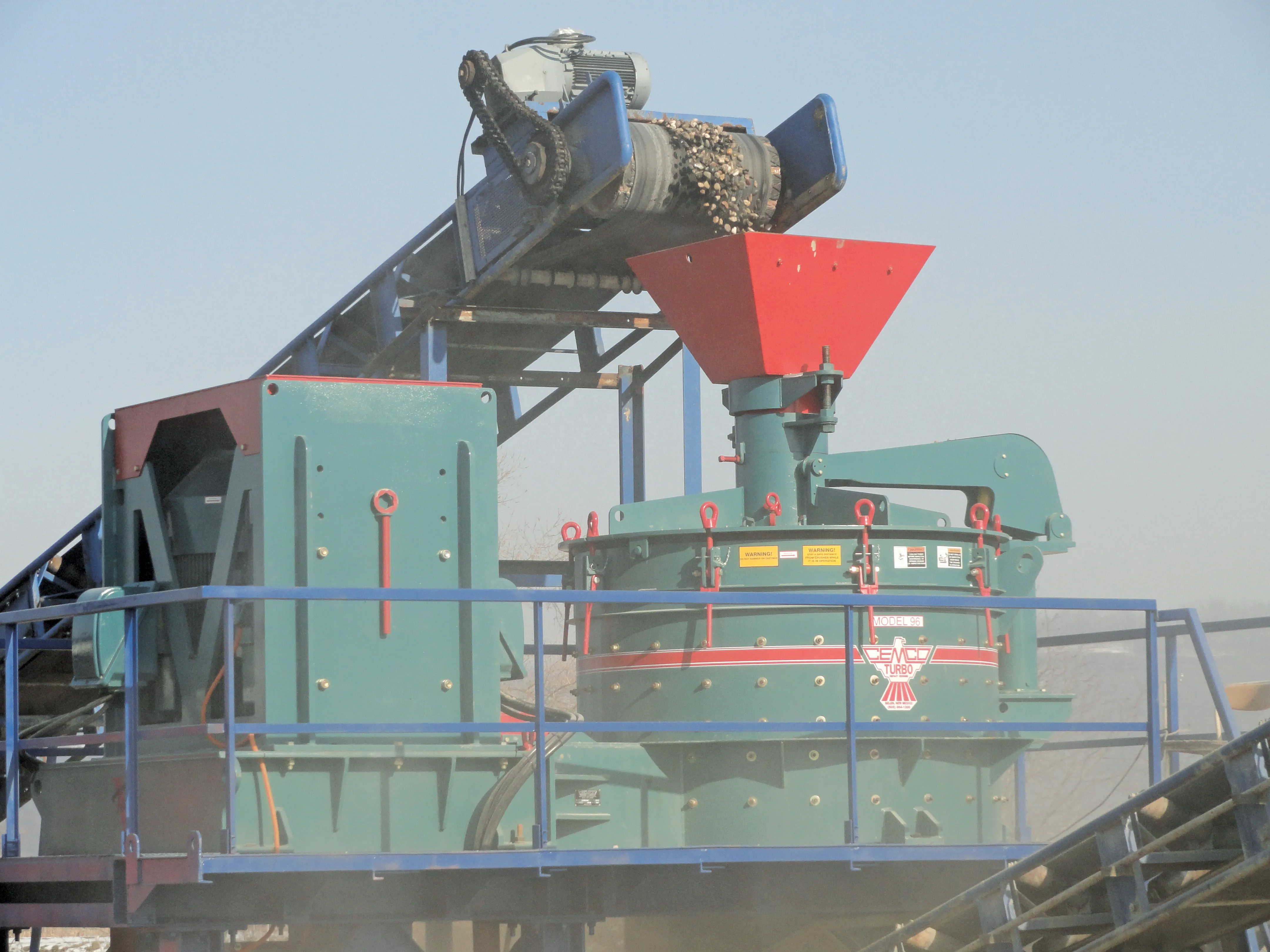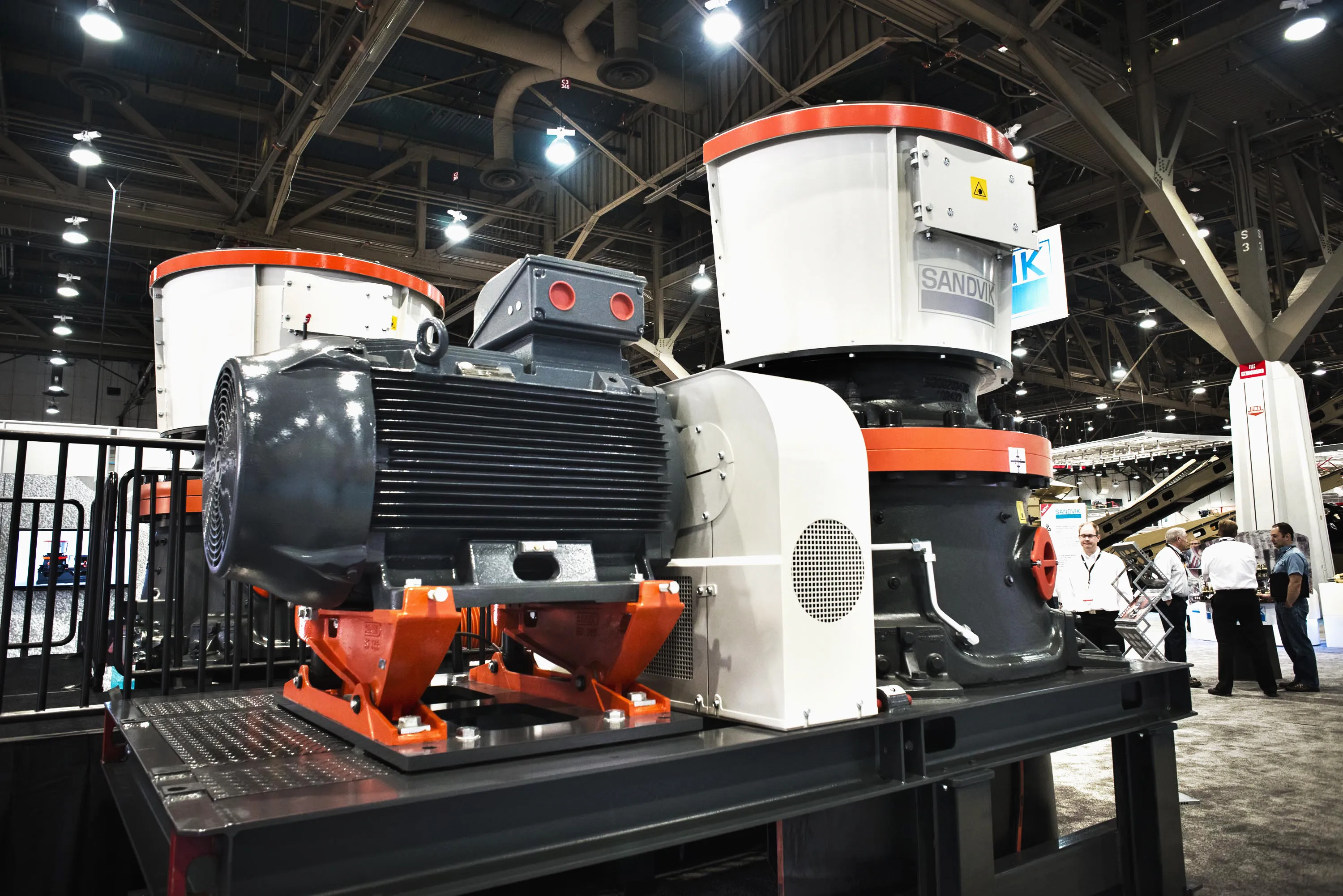UAE company National Quarries has managed to increase crushing efficiency following the commissioning of new plant. The firm’s existing crushing plant was doing satisfactory work, but the company’s management felt performance was lacking. As a result, the company approached Sandvik Construction Middle East, which offered the modern solution of using a CH660 cone crusher. The new unit has delivered improved production leading to even more orders for Sandvik equipment.
In order to produce the large amount
June 7, 2016
Read time: 3 mins

UAE company National Quarries has managed to increase crushing efficiency following the commissioning of new plant
The firm’s existing crushing plant was doing satisfactory work, but the company’s management felt performance was lacking. As a result, the company approached2403 Sandvik Construction Middle East, which offered the modern solution of using a CH660 cone crusher. The new unit has delivered improved production leading to even more orders for Sandvik equipment.
In order to produce the large amount of accurately sized aggregates demanded by the local construction and ready-mix industries, National Quarries has a three-stage crushing process. This consists of a jaw crusher as a primary; a cone working as the secondary crusher, and two impact crushers operating in a tertiary capacity. The company realised that its existing secondary cone crusher was causing a bottleneck with regard to throughput.
National Quarries then started looking seriously into what could be done to improve its existing plant. Sandvik Construction in the Middle East was then invited to take a look at the existing operation. In order to be able to propose the best solution possible for National Quarries, Sandvik was able to use its PlantDesigner simulation tool. Used together with the production figures, this allowed the team to try to find the optimal solution in order to increase capacity. Different scenarios were checked and it was clear that the secondary cone crusher was a bottleneck in terms of capacity, but also the reduction ratio was quite poor which led to a coarse feed to the tertiary impactors and an unnecessary amount going in closed circuit over the impactors.
Using the PlantDesigner simulation tool enabled Sandvik to propose a simple and cost -effective solution. Changing the secondary crusher to a Sandvik CH660 would increase the throughput in the secondary stage while the net production in the impactors would also increase due to the decreased percentage going in closed circuit.
National Quarries replaced its existing cone crusher with the CH660, production improving as a result and a gain in total plant capacity of some 25%.
The output from the old cone crusher was around 0-75mm, while with the CH660 the firm can now reduce the output to 0-63mm. This has led to a reduction of the closed circuit on the tertiary impactors, resulting in increased lifetime of the wear parts in the impactors by 65%. The firm are also using 20% less fuel in their generators due to less power consumption. On top of that the 0-5 mm production, which is a less valuable product, has decreased about 5%.
When it came time for National Quarries to invest in a new crushing plant, Sandvik was selected to supply the new plant due to the success of the first CH660. During the evaluation process, the Sandvik and National Quarries teams worked closely together to find the right solution. National Quarries then placed an order with Sandvik Middle East for one CJ615 jaw crusher, two CI532 impact crushers, one primary feeder and three product screens for its new crushing plant.
The firm’s existing crushing plant was doing satisfactory work, but the company’s management felt performance was lacking. As a result, the company approached
In order to produce the large amount of accurately sized aggregates demanded by the local construction and ready-mix industries, National Quarries has a three-stage crushing process. This consists of a jaw crusher as a primary; a cone working as the secondary crusher, and two impact crushers operating in a tertiary capacity. The company realised that its existing secondary cone crusher was causing a bottleneck with regard to throughput.
National Quarries then started looking seriously into what could be done to improve its existing plant. Sandvik Construction in the Middle East was then invited to take a look at the existing operation. In order to be able to propose the best solution possible for National Quarries, Sandvik was able to use its PlantDesigner simulation tool. Used together with the production figures, this allowed the team to try to find the optimal solution in order to increase capacity. Different scenarios were checked and it was clear that the secondary cone crusher was a bottleneck in terms of capacity, but also the reduction ratio was quite poor which led to a coarse feed to the tertiary impactors and an unnecessary amount going in closed circuit over the impactors.
Using the PlantDesigner simulation tool enabled Sandvik to propose a simple and cost -effective solution. Changing the secondary crusher to a Sandvik CH660 would increase the throughput in the secondary stage while the net production in the impactors would also increase due to the decreased percentage going in closed circuit.
National Quarries replaced its existing cone crusher with the CH660, production improving as a result and a gain in total plant capacity of some 25%.
The output from the old cone crusher was around 0-75mm, while with the CH660 the firm can now reduce the output to 0-63mm. This has led to a reduction of the closed circuit on the tertiary impactors, resulting in increased lifetime of the wear parts in the impactors by 65%. The firm are also using 20% less fuel in their generators due to less power consumption. On top of that the 0-5 mm production, which is a less valuable product, has decreased about 5%.
When it came time for National Quarries to invest in a new crushing plant, Sandvik was selected to supply the new plant due to the success of the first CH660. During the evaluation process, the Sandvik and National Quarries teams worked closely together to find the right solution. National Quarries then placed an order with Sandvik Middle East for one CJ615 jaw crusher, two CI532 impact crushers, one primary feeder and three product screens for its new crushing plant.








